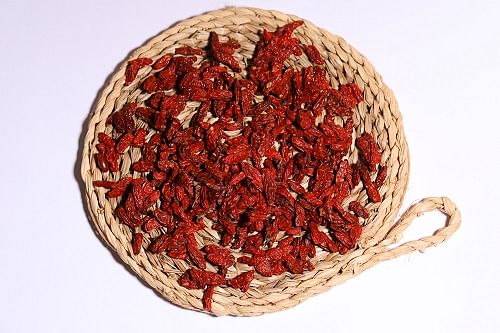
That Sunday, it was already half past one in the afternoon when the cab reached the busy market area of Shirakol while I was returning from our favourite weekend getaway spot of Bakhkhali Sea Beach, located in the South 24 Paraganas district of West Bengal. The cheery middle-aged cab driver gestured towards a display board that read Loitya Shutki Maacher Jhal (a spicy cuisine of dried Bombay Duck fish), put up in front of a small dhaba, offering Bengali cuisine, and said: “Please try this local speciality dish — it speaks much about the traditional Dokhkhin Paraganas (early South 24 Paraganas) cooking styles.”
Interestingly, as I savoured the tender, chewy-textured pale golden fillet-like pieces of the dried Loitya fish, having that unique ‘fishy’ aroma, put into the garlic and chilli-spiced curry, along with some steamed rice, an elderly, bespectacled staff of the eatery, said smiling, “For this popular spicy dried fish cuisine of Dokhkhin Paraganas dating back to the 15th century, the Loitya or Bombay Duck slices sun-dried on raised bamboo racks of the killa (a bamboo-fenced area), was the most important ingredient. Even today, while making the Loitya Shutki Maacher Jhal cuisine, we prefer the traditionally sun-dried Loitya slices.
Furthermore, as per traditional Dokhkhin Paraganas cooking styles, first, we boil the split dried Loitya fish slices in salt water; then, gently sauté the dried Loitya maach with the garlic and chilli spices — which, of course, is essential for adding a bit of zest to this Shutki Loitya fish cuisine.”
It’s not just Bengal, sun-dried vegetables, fruits, fish or meat — whether fried, roasted, curried or even stewed — are popular in traditional cuisines in different regions across India.
For instance, for the traditional Kashmiri cuisine of Gogji Rajma, which was a combination of turnips and rajma dal, my Delhi-based Kashmiri neighbour preferred using the hokh-syun, rather sun-dried turnip circles. Interestingly enough, going back to the age-old Kashmiri hokh-syun (sun-drying) tradition, as I was told, half-thick turnip circles were pierced at the centre; then, tied to form a string and finally, hung from the clothesline on the terrace for getting sun-dried. In fact, I remember my Kashmiri neighbour saying that slow-simmering the hokh-syun turnip circles to the creamy rajma dal, flavoured with ground ginger and fennel seeds spices, over a gentle flame, is essential for intensifying the earthy flavours of the traditional Kashmiri Gogji Rajma cuisine. Furthermore, health-wise, according to scientific research studies, it has been seen that the traditionally sun-dried ingredients used in different traditional cuisines have been known to promote good health — for instance, in case of the traditional Shutki Loitya (dried Bombay Duck cuisine), the presence of a low level of saturated fat in the dried Bombay Duck fish slices helps to promote healthy functioning of the heart while the dried lamb meat pieces in the Sikkimese Chartayshya Curry cuisine, contains high immune-boosting zinc levels and the hokh-syun turnips in the traditional Kashmiri Gogji Rajma cuisine are rich in dietary fibres.